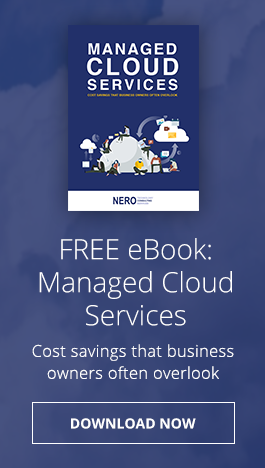You’re home and you’re working. The same goes for your team, and this means everyone.
It won’t last forever (we hope), but it is going to be a little while until we get back to normal.
Your IT department or partner is probably going at 110% right now as they get each person ready to work from home, and they are going to deserve a prize when things settle down.
However, in case your IT Manager or MSP seems overwhelmed or possibly underprepared, here’s a simple checklist you can use to guide your decisionmaking and conversations with them.
As business owners and managers, this is our moment to show true leadership. Good luck and let us know if you need help.
Define the rules of engagement
Losing the face to face will feel like a total disconnect and create a sense of isolation for some people, which can negatively affect moods and productivity.
Therefore, in order to minimize the trickle-down effects, we should structure some aspects of collaboration. This is essential for everyone on the team to understand and follow as best they can, and especially for employees who are most vulnerable to view the changes negatively.
Here are a few things you can incorporate into your work from home policies:
Suggest a daily virtual huddle that’s unique so people remember, something like “10:11 am morning check-in” or “3:13 PM end of day huddle” or “we will jump on a TEAMS meeting at 10 after the hour, every hour”
Do not force the webcam, because while it creates a warmer connection in good instances, it can also make some feel uncomfortable as they adjust.
Chat vs. Call vs. Video: Define when you are supposed to use each of those tools. Maybe chat is appropriate for quick questions and conversations around an ongoing project. Calls for quick discussions up to two people and Video for meetings with more than three people and more than 15 minutes.
Let’s Talk Technology
Under the present circumstances, sending your employees to work from home might be a quick decision to make which means you won’t have enough time to prepare. In an ideal world, you’ll have enough time to move your applications to the cloud including your phone system and set up virtual desktops for all your employees. But that takes time, so here are a few technology tools you can quickly deploy:
Internet Bandwidth: Make sure they all have the internet bandwidth needed to work from home. A good standard that should provide enough horsepower is 50 Mb down, 5 Mb upload speed. If your employees aren’t getting those kinds of speeds, you may consider offering to subsidize the difference to upgrade them from their current plan to 50 Mb x 5 Mb.
Video Conferencing: If your team is forced to stay at home, having a high-definition video conferencing bridge will enable you to stay connected as a team and to stay connected to your customers. Solutions like Skype for Business, Zoom, Google Hangouts or Microsoft Teams will give you a good quality of voice and video with a quick rollout.
Collaboration: Using tools like Slack, or Microsoft Teams, your teams will be able to communicate one-to-one, one-to-many, much like a group text that never goes away. Add employees at a future date and they’ll see the entire history of the chat as well as all of the files that have been uploaded to the specific groups.
Business-critical apps and Storage: If you’re not a Salesforce or Hubspot CRM user (full cloud-based apps) then reach out to your IT Team or provider to ask how quickly they can move critical applications like your CRM to a public cloud. Also, if you’re thinking of moving data to the cloud consider paid options like Microsoft OneDrive, or Dropbox for Business that have additional layers of encryption to guarantee the security of your data.
Do not forget about security
When working from home, you should also think about enabling remote access while providing the ability to sanitize each device before it connects to the corporate network, data or resources. The first concern is providing all users the means to securely connect to the corporate network and relevant resources from home, here is a list of technologies that will enhance the security features of your remote workers:
VPN – Provides full access to the corporate network with a VPN client. In order to implement this solution, a VPN client should be installed on each one of the devices with a relevant multi-factor authentication (MFA) means configured (OTP with SMS or email), and the user groups in the relevant remote access VPN community should be updated accordingly.
MFA – Many times MFA is enabled but not enforced, so make sure it is enforced for all users and apps. If hardware tokens are too expensive, use an Authentication App on a smartphone rather than 2FA (Text messages).
WiFi – Wifi must have WPA-2 security and don’t publish your SSID / Wifi Name. Never use shared/public Wifi, and if possible avoid using Wifi all together and use a wired network. Also, create a guest network to separate your work computer from all other devices. Some routers have this functionality built-in or purchase an additional router just for work.
Complex Passwords – Do not under any circumstances save your passwords to your browser. Use long and complex pass-phases and don’t reuse them. Use a unique password for your Wifi, Apps, Router, etc…
Safe Browser – It’s advised to use a secure browser like Brave Browser, which is also faster.
Keep your device updated – Apply the latest security patches (OS and Apps) and avoid outdated Operating Systems like Windows 7 or XP across both Virtual Desktops and Personal computers. Keep only apps that were approved by the organization (uninstall all others) and turn on automatic updates.
Endpoint protection – Use a NextGen anti-virus solution on all remote devices.
Firewall – Make sure the built-in firewall is properly configured and always enabled on remote devices.
Backup – Direct users how and where to back up their data, don’t rely on them to come up with a solution. Preferably an encrypted offline backup.
Encryption – Encrypt files stored on devices. Many options exist for protecting files including encrypting individual files or folders, volumes, and hard drives, and avoid using removable devices such as USB sticks.
Depending on your industry, up to 100% of your teams may soon be working from home, and due to the exponential nature of viral spreads, the situation is likely to outpace traditional planning methodologies. When so much is uncertain and worrisome, it’s that much more important to make it possible for people to continue working with their teammates and be productive. With the right management and technology behind them, at least this part of life can remain familiar and comfortable.



Pingback: What is VoIP? Solutions for New York Businesses | Nero Consulting